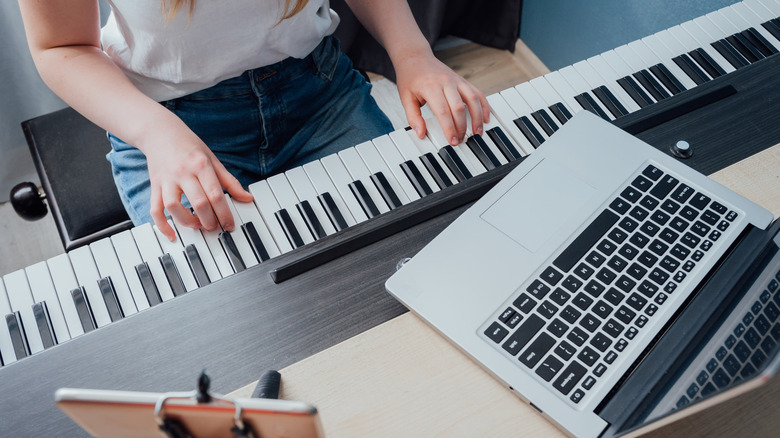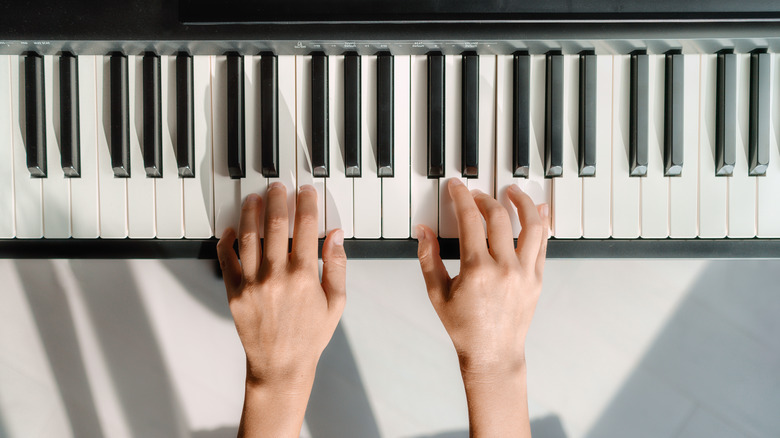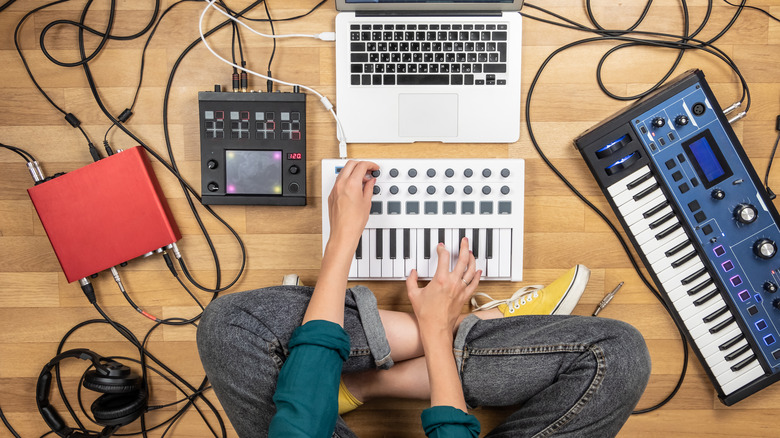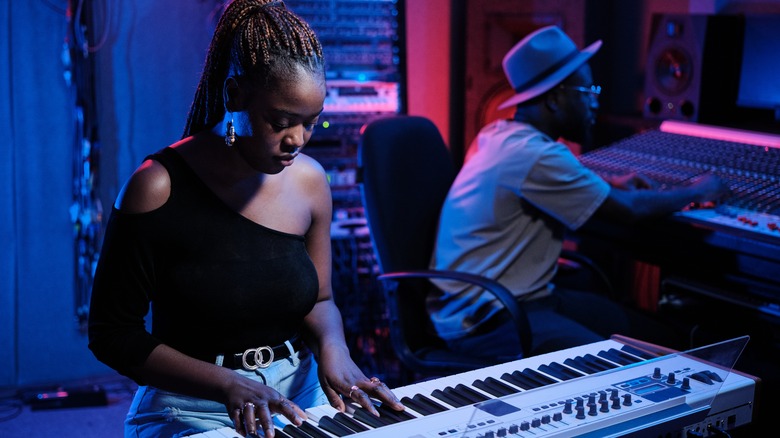Digital Pianos Vs Keyboards: What Are The Big Differences?
We may receive a commission on purchases made from links.
Music has a decades-long history of embracing electronics. Whether we're talking about plugging a guitar into an amplifier or creating full songs from MIDI sound packs on Ableton Live, technology has massively shaped what music sounds like today. Some use these technological devices to create sounds we've never heard before. Others try to recreate the sounds made by traditional instruments as best as they can, sometimes to avoid having to purchase equipment, hire musicians, and book a recording studio.
In the digital age, one of the most important pieces of equipment for a musician is the keyboard, an instrument that can be used in a myriad of different ways. It makes just as much sense on a stage for a stadium concert tour as it does in a bedroom, making a song on a laptop. Now, if you were to go out and buy a keyboard, you may run into something called a digital piano. At first glance, these two seem like the same thing, as they are electronic takes on the classic piano. You might see the black and white keys and may think you could choose either one of them. But despite how similar they are aesthetically, a keyboard and a digital piano are quite different in how they are made and how you should use them. Here's a quick guide to help you determine which one is right for you.
Number of keys
Musical instruments tend to have certain features that make them what they are. That could mean they have a certain number of strings, a certain shape, or are made out of a certain material. One of the main things that makes it a piano is that it features 88 keys. You may have never sat down and counted them, but if you were to sit at nearly any piano ever produced, you would find there to be 88 — 52 white ones and 36 black ones.
Digital pianos usually take after their namesake and feature 88 keys, as they are meant to approximate the experience of using an acoustic piano. Meanwhile, some keyboards feature 88 keys, but you will most likely find them with fewer keys than that. The most common key count for a keyboard is 61, accounting for a five-octave range. But they can vary greatly in size — there are also 37-key, 49-key, and 73-key models. There's even 25-key ones like the Akai MPK Mini Play. Because there is a wider range of applications for keyboards, there is less of a necessity to perfectly replicate the experience of playing a piano. That extends to how the sounds are made as well.
Playing mechanisms
If you've ever played an actual piano, you may have been surprised by the weight of the keys and the force it takes to play notes. In addition, each key is weighted differently, as the note and register determine just how heavy it should be. The action of a piano plays a major role in the instrument's resonance and how each person approaches playing it, such as how hard or soft you play the keys. Just as a digital piano looks to recreate the playing experience of a real piano with the number of keys, it does the same with its play action.
Digital pianos have a key action that is either weighted or semi-weighted to minimize the difference between how someone would play the two different kinds of pianos. The playing versatility you have playing the piano remains when you move over to a digital one. Keyboards, on the other hand, have no weighted keys. Instead, the keys are spring-loaded — when pressed, they activate a sensor that plays the note. Because of this, there is no human control in the resonance of a note. The note simply is the note, no matter how hard you press down on the key.
Sound options
Choosing between a digital piano or keyboard won't just come down to just the physicality of the instruments, though of course their practical functions are very important. The differences between the two also encompass what you can play on them. Notably, keyboards have far greater tonal variety than digital pianos.
Digital pianos are not just aiming to recreate the experience of playing a real piano in how it's built but also in what it sounds like. After all, a piano just sounds like a piano, and if your goal is to play one, it would not serve much of a purpose to load a digital piano with many different sound qualities that stray away from traditional piano sounds.
On the other hand, keyboards offer an array of different sounds that bear little to no resemblance to the sound of a piano. They may have the key layout of a piano, but that's simply for the basic optionality of notes. In terms of sounds, keyboards can approximate the sound of a piano, but they can do the same for many different instruments, as well as sounds that are purely electronic and don't sound like any traditional instrument at all. For instance, the Yamaha PSR-SX900 keyboard comes with 850 premium voices and 415 styles.
Although digital pianos and keyboards may look the same at first glance, the two could not be more different in application and operation.



